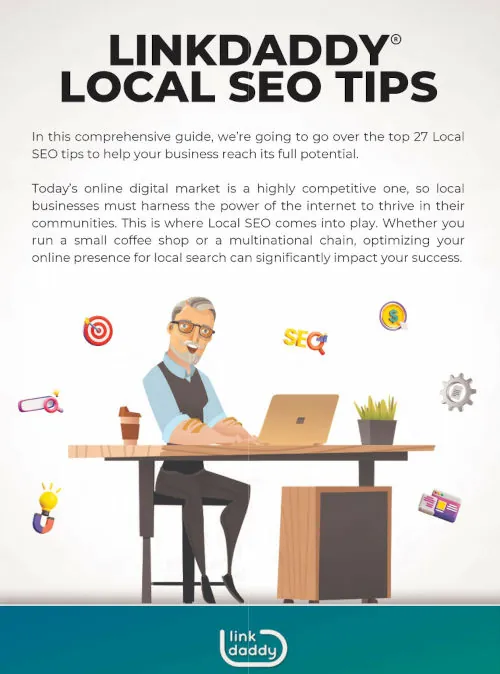
For any organization, having an internet presence is essential. And when it comes to getting noticed in the vast sea of websites and blogs, search engine optimization (SEO) is the key to success. Without an SEO-friendly content strategy, your valuable content may get lost in the virtual abyss, making it difficult for potential customers or readers to find you.
But why is optimizing your content for search engines so important? The benefits are astounding, and they can catapult your brand or blog to new heights. By utilizing SEO techniques, you can increase your organic traffic, enhance your visibility, and ultimately boost your conversions and revenue. It’s the recipe for online success!
That’s why we have created this blog—to guide you through the intricate world of SEO-friendly content strategy and help you unlock its immense potential. We will dive deep into the various aspects of SEO, providing you with invaluable tips, tricks, and techniques to level up your content game.
Throughout this blog, you can expect to learn about various elements of an SEO-friendly content strategy. We will explore keyword research and how to effectively incorporate keywords into your content to improve your search engine rankings. We will share insights on crafting compelling and engaging headlines that not only capture attention but also cater to SEO algorithms.
Furthermore, we will delve into the art of creating high-quality backlinks, which are essential for establishing your website’s authority and relevance in the eyes of search engines. You’ll discover the power of optimizing your website’s structure and user experience and how it impacts your SEO performance. We’ll also touch upon the significance of optimizing your content for voice search, mobile devices, and the ever-growing realm of social media.
Whether you’re a business owner seeking to expand your online reach or a passionate blogger hungry for increased visibility, this blog will equip you with the necessary knowledge and strategies to succeed. So, join us on this thrilling journey as we unravel the secrets of SEO-friendly content strategy and propel your digital presence to new heights!
Understanding SEO
A key factor in bringing organic traffic to websites is search engine optimization, or SEO. By implementing various strategies and techniques, businesses can improve their search engine rankings, resulting in higher visibility and increased website traffic. Let’s delve deeper into the world of SEO and uncover the key factors that influence search engine rankings.
1. Quality Content: One of the most important factors in SEO is producing high-quality, relevant content. Search engines give priority to websites that provide their users with useful information. Creating engaging and informative content not only enhances the user experience but also increases the likelihood of your website ranking higher in search results.
2. Backlinks: Backlinks are links from other websites that lead back to your site. Backlinks are regarded by search engines as authority and trustworthiness votes. The more reputable and relevant websites link back to your site, the higher your search engine ranking will be. However, it’s important to note that quality outweighs quantity when it comes to backlinks.
3. Mobile Optimization: With the rise of mobile devices, optimizing your website for mobile is crucial. Websites optimized for mobile devices rank higher in search results on search engines. Ensuring that your website is responsive, fast, and provides a seamless mobile experience will positively impact your search engine rankings.
4. Page Speed: Users value fast-loading websites, and search engines do too. Page speed is a critical ranking factor as it directly impacts the user experience. Optimizing images, reducing server response time, and leveraging browser caching are some ways to improve page speed and enhance your SEO efforts.
The Importance of Keyword Research in Content Strategy
Keyword research is a crucial aspect of SEO and plays a significant role in content strategy. It involves identifying the keywords and phrases that users are searching for when looking for specific information or products.
1. Targeting Relevant Keywords: By conducting thorough keyword research, businesses can identify the most relevant and effective keywords to optimize their content. Understanding user search intent and incorporating these keywords strategically into your content will increase the visibility and reach of your website in search engine results.
2. Long-Tail Keywords: Long-tail keywords are longer, more specific phrases that users search for. While they may have lower search volume, they tend to have higher conversion rates. Incorporating long-tail keywords into your content strategy allows you to target a niche audience and attract more qualified leads.
3. Competitive Analysis: Keyword research also involves analyzing your competitors’ keywords. By uncovering the keywords they are ranking for, you can identify gaps and opportunities in the market, allowing you to create targeted content that stands out from the competition.
Understanding SEO and its key factors is essential for businesses aiming to drive organic traffic to their websites. By focusing on creating quality content, building reputable backlinks, optimizing for mobile, and conducting thorough keyword research, businesses can improve their search engine rankings, increase website traffic, and ultimately achieve online success.
Creating an SEO-friendly Content Strategy

Creating an SEO-friendly content strategy is crucial in today’s digital landscape. With the ever-increasing competition for online visibility, businesses need to ensure their website ranks highly in search engine results. By following these steps, you can effectively optimize your content for search engines and attract your target audience.
Step 1. Start by conducting thorough keyword research. This involves identifying keywords and phrases that your audience is likely to use while searching for information related to your industry or products. Tools like Google Keyword Planner or SEMrush can help you find popular and relevant keywords.
Step 2. Examine each prospective keyword’s search volume and competition after you’ve compiled a list of them. Pay attention to long-tail keywords, which are less competitive, longer, more specialized phrases. These can help you reach a more specialized audience and improve your search engine ranking.
Step 3. After identifying your keywords, you can come up with relevant and engaging topics based on them. Consider the search intent of your audience. Are they looking for information, product reviews, or guides? Tailor your content to satisfy their needs and provide valuable insights.
Step 4. As you develop your content calendar, consider prioritizing topics based on their relevance and seasonality. For instance, if you run a fitness blog, topics related to New Year’s resolutions might be more relevant and likely to attract readers at the beginning of the year. Similarly, consider seasonal events or trends to plan your content accordingly.
Step 5. Ensure that your content is optimized for SEO. This includes incorporating your chosen keywords into the title, headings, and throughout the body of the article. However, avoid keyword stuffing, as it may negatively impact the readability and user experience of your content.
Step 6. Regularly review and update your content strategy. Monitor the performance of your articles using analytics tools and adjust your strategy accordingly. Keep up with industry trends and adapt your content to stay relevant and engaging with your target audience.
By following these steps and creating an SEO-friendly content strategy, you can improve your website’s visibility and attract the right audience. Remember, consistency and quality are key to creating a successful content marketing strategy that drives organic traffic to your website.
Optimizing Content for Search Engines
When it comes to optimizing your website for search engines, there are various techniques you can use to improve your website’s visibility and increase organic traffic. In this article, we will explore some effective on-page optimization techniques, including keyword placement and meta tags, creating compelling titles and meta descriptions, and utilizing headers, subheadings, and bullet points for readability and SEO optimization.
A crucial aspect of on-page optimization is strategically placing keywords throughout your website’s content. This helps search engines understand what your site is about and improves its chances of ranking for relevant searches. For instance, if you have a beauty blog and want to target the keyword “natural skincare tips,” ensure that this keyword is included in the page’s title, first paragraph, headings, and meta description. However, be cautious not to overuse keywords, as this can be seen as spammy by search engines and negatively impact your rankings.
In addition to keyword placement, meta tags play a vital role in on-page optimization. Meta tags give search engines a concise summary of your webpage’s content. For example, if you’re writing a blog post about “10 Ways to Improve Your Productivity,” your meta description should provide a compelling and concise overview of what the post offers, like “Discover tried and tested methods to boost your productivity and achieve your goals effectively.” This entices users to click on your link when it appears in search results.
Titles are another essential element when optimizing your content. A captivating and descriptive title not only attracts users but also improves your search engine rankings. Let’s say you offer handcrafted jewelry on your website. Instead of a generic title like “Handmade Jewelry Collection,” you could create a title that incorporates relevant keywords, such as “Elegant Handcrafted Jewelry for Every Occasion.” This title not only grabs attention but also helps search engines understand the purpose and context of your website.
Furthermore, headers, subheadings, and bullet points are excellent tools for enhancing both readability and SEO optimization. Break your content into logical sections with clear headings and subheadings that contain relevant keywords. This allows users and search engines to quickly navigate through your content and understand its structure. Additionally, incorporating bullet points in your articles makes the content more scannable, improves readability, and enhances your chances of appearing in featured snippets on search engine results pages.
Optimizing your website’s content for search engines involves various techniques, including keyword placement, meta tags, appealing titles, and formatting with headers, subheadings, and bullet points. By implementing these strategies effectively, you can improve your website’s visibility, increase organic traffic, and ultimately enhance your online presence.
Summary

We have discussed the importance of implementing an SEO-friendly content strategy to drive organic traffic and improve search engine rankings. We have covered key points such as understanding the importance of keywords and conducting thorough keyword research, optimizing on-page and off-page elements, and creating high-quality and relevant content that provides value to the target audience.
It is crucial to continuously monitor and adjust our content strategy based on analytics and SEO best practices. By regularly analyzing website metrics and SEO data, we can gain valuable insights about our content’s performance and identify areas for improvement. This includes tracking keyword rankings, monitoring website traffic, and analyzing user behavior on our site. By staying updated on the latest SEO trends and adapting our strategy accordingly, we can ensure that our content remains relevant and optimized for search engines.
Implementing an SEO-friendly content strategy can greatly benefit businesses and websites. By ranking higher in search engine results, we can attract more organic traffic and increase our visibility to potential customers and clients. In the end, this may result in increased income and conversions. Additionally, an SEO-friendly content strategy helps to build trust and credibility with our audience, as it demonstrates our expertise in the industry and our commitment to providing valuable and relevant information.
It is essential to start implementing an SEO-friendly content strategy in order to drive organic traffic and improve search engine rankings. By understanding and implementing SEO best practices and continuously monitoring and adjusting our strategy based on analytics, we can achieve long-term success and establish a strong online presence.
Frequently Asked Questions
1. How often should I update my content to maintain SEO relevance?
2. How do I optimize content for voice search?
3. Is link building important for an SEO-friendly content strategy?
LinkDaddy is the Solution for all your Content Strategy Needs

Are you looking to take your website’s SEO strategies to the next level? Look no further than LinkDaddy! With their comprehensive range of services, they can help you improve your online visibility, increase your organic traffic, and boost your search engine rankings.
One of the key services offered by LinkDaddy is the opportunity to buy backlinks that actually work. Backlinks are an essential part of any successful SEO strategy, as they help search engines understand the relevance and authority of your website. LinkDaddy specializes in providing high-quality backlinks that can give your website the edge it needs to rise above the competition.
Imagine seeing a significant increase in your organic traffic. With LinkDaddy, that dream can become a reality. By buying quality backlinks, you can attract more visitors to your website who are genuinely interested in what you have to offer. This targeted traffic can lead to more conversions, higher sales, and a stronger online presence for your business.
But it doesn’t stop there. LinkDaddy also offers a range of other services, including press releases, Google profile optimization, and social media management. These services can further boost your online visibility and help you reach a wider audience.
So why wait? Take action now and visit LinkDaddy to explore their services and take advantage of their expertise in improving your SEO strategies. Don’t miss out on the opportunity to drive more organic traffic to your website and increase your online success. Visit LinkDaddy today and watch your business soar to new heights!









